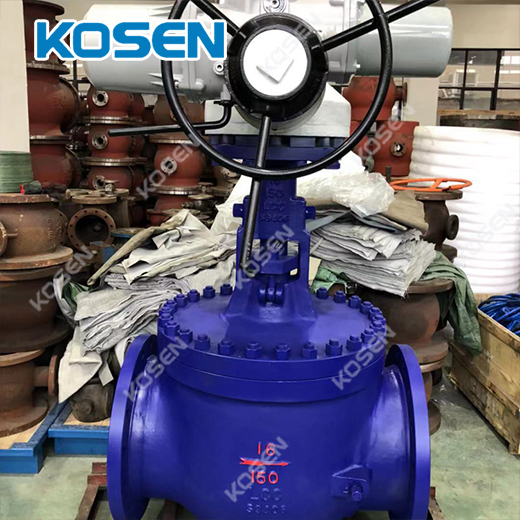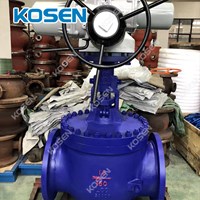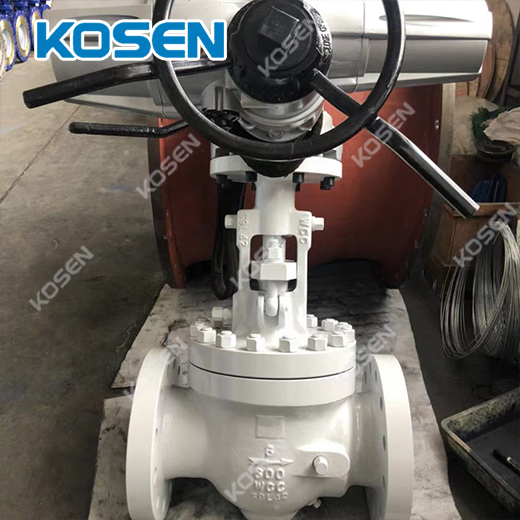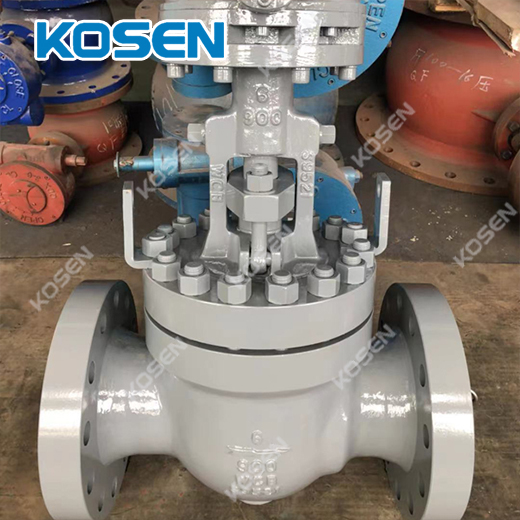RISING STEM ORBIT BALL VALVE
- Port size
- DN25~DN700 (1 "~28")
- Pressure
- PN16~PN200 (CL150lb~1500lb)
- Structure
- Orbit ball
- Medium
- Water or other special liquid
- Temperature
- -196℃~550℃
- Body material
- Cast Steel, Stainless Steel
- Connection
- Flange
- Feature
- Orbit ball valve manufacturing in China
Product Description
The forced sealing valve (orbit ball valve) uses the inclined plane at the bottom of the valve stem to cooperate with the spiral groove to realize the tilting and rotation of the ball. When the valve is opened, the ball tilts away from the valve seat, and the fluid in the pipeline passes through the valve evenly along the surface of the ball, which reduces the local erosion and corrosion of the valve seat by the high-speed fluid, and the ball turns to the fully open position later. When the valve is closed, the ball acts on the valve seat by means of the mechanical wedge tightening force of the valve stem inclined plane to generate the required sealing specific pressure and ensure reliable sealing. Generally, during the opening and closing process of the ball valve, due to different environments and pressure rise, the opening torque of the valve will be increased, resulting in wear of the valve seat and increase of the driving device.
Working principle
The orbit ball valve adopts the principle of cam, which makes the ball valve separate from the sealing surface of the valve seat during rotation. After the ball valve is rotated in place, it will be pushed to the valve seat to realize sealing. Therefore, compared with the traditional fixed or floating ball valve, the switching torque is small, and the spherical seal is not easy to be damaged. Due to the unique structural design of the track ball valve, it has the characteristics of no wear on the switch and good shut-off performance. It can be applied to various harsh working conditions, and can be widely applied to sewage, petroleum, chemical, pharmaceutical, energy and other system pipelines.
Product features
» Single seat design + forced sealing to ensure that the valve has two-way sealing function;
» Swinging ball, mechanical lifting valve rod: the valve switch is free of wear and low torque operation;
» Mechanical wedge: the inclined plane at the lower end of the valve rod provides mechanical wedge tightening force to ensure continuous tight sealing;
» Double valve rod guide: the hard valve rod guide groove and guide pin control the lifting and rotation of the valve rod, so as to control the ball and realize friction free opening and closing;
» Self cleaning function: when the ball is tipped away from the valve seat, the fluid will wash away the impurities attached to the ball and the valve seat 360°along the sealing surface.
Technical parameter
» Nominal diameter: DN25~DN700 (1 "~28")
» Nominal pressure: PN16~PN200 (CL150lb~1500lb)
» Applicable media: various soft media and suspensions for water, oil and natural gas
» Applicable temperature: -196℃~550℃
» Operation mode: manual, electric, pneumatic
» Design standard: GB/T 12237-89, API608
» Face to face: GB/T 12221-89, ASME/ANSI B 16.10
» Flange connection: JB/T 79-94, ASME/ANSI B 16.5
» Test standard: JB/T 79-94, ASME/ANSI B 16.5
Materials of main parts
|
No |
Part |
Matarial |
|
1 |
BODY |
A216-WCB |
|
2 |
GASKET |
FLEXIBLE GRAPHITE |
|
3 |
BUSHING |
BRONZE |
|
4 |
SEAL RING |
PTFE |
|
5 |
BALL |
WCB + HCr /STL |
|
6 |
PIN |
A276-410 |
|
7 |
STEM |
A182-F6a |
|
8 |
PACKING |
FLEXIBLE GRAPHITE |
|
9 |
GLAND |
A276-WCB |
|
10 |
BEARING |
ASSEMBLY |
|
11 |
STEM NUT |
A439-D2C |
|
12 |
GLAND |
ANSI C 1036 |
|
13 |
HANDWEEL |
QT400-17 |
|
14 |
YOKE |
A276-WCB |
|
15 |
PIN |
A276-410 |
|
16 |
BONNET |
A276-WCB |
|
17 |
BOLT |
A194-2H |
|
18 |
NUT |
A193-B7 |
Related Products
Dongou Industrial Zone, Oubei, Wenzhou, Zhejiang, China




